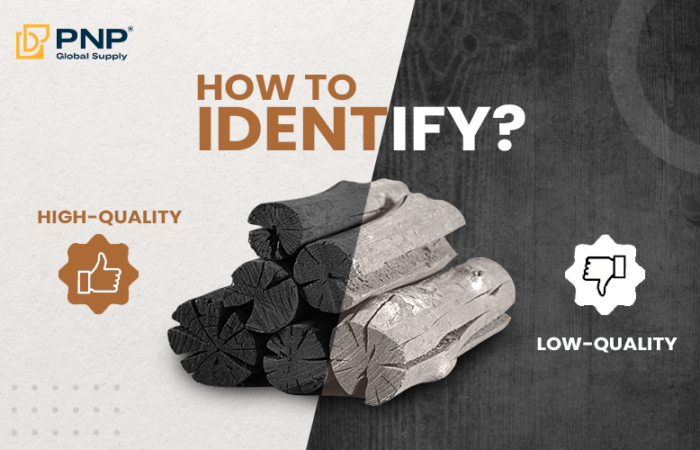Understanding the difference between activated charcoal and regular charcoal is essential for making the right choice for your needs-whether it’s for grilling or for purification and detox purposes. In this expert guide, we’ll break down what each product is, how it’s produced, its primary uses, along with detailed pros and cons. We’ve also included a comparison table to help you quickly grasp the key differences.
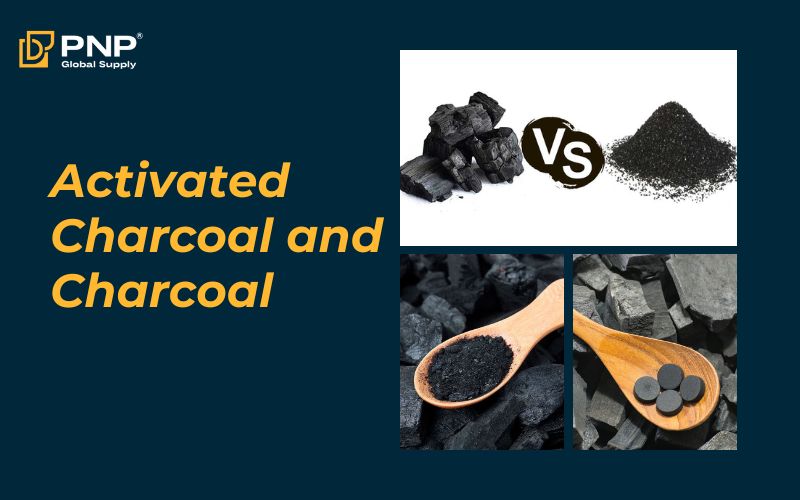
What Is Charcoal?
Definition and How It’s Made
Charcoal (فحم نباتي) is a lightweight, carbon-rich material produced by heating organic matter – mangrove, longan, eucalyptus, coffee – in a low-oxygen environment. This process, called pyrolysis, burns off volatile compounds and leaves behind a porous, black substance. Historically, charcoal has been used for thousands of years by ancient civilizations for cooking and metal forging.
Production Process:
- Stage 1 – Raw Material Preparation: The process of making lump charcoal begins with the careful selection of wood. Species such as coffee, longan, mangrove, eucalyptus, and khaya are preferred due to their ability to produce hard, low-ash charcoal. Once selected, the wood is cut into appropriately sized pieces and naturally dried. This stage is crucial as it removes excess moisture and lays the foundation for efficient carbonization later on.
- Stage 2 – Stacking the Wood in the Kiln: With the raw materials ready, the wood is then arranged inside the kiln. The pieces of wood are carefully stacked in the earthen or brick kiln to ensure even burning. Proper stacking of the wood is essential to maintaining a steady temperature and controlling the airflow, both of which are crucial to converting wood into wood charcoal (فحم للشواء)
- Stage 3 – Oxygen-limited Burning and Carbonization: This stage is the heart of the process, where the wood is subjected to oxygen-limited burning at temperatures between 500-600°C. Over a period of 18-25 days, the wood gradually undergoes carbonization, transforming its molecular structure into charcoal. The meticulous control of temperature and limited oxygen conditions not only preserves the desirable qualities of the charcoal but also minimizes the production of ash, ensuring a high-quality final product.
- Stage 4 – Cooling and Harvesting: After carbonization, the charcoal is allowed to cool naturally for about 20 days until its temperature drops to a safe level. Once cooled, the charcoal is harvested and rigorously inspected. Only the batches with the desired firmness and low ash content are selected for packaging and delivery, reflecting the careful and systematic approach to producing premium lump charcoal.
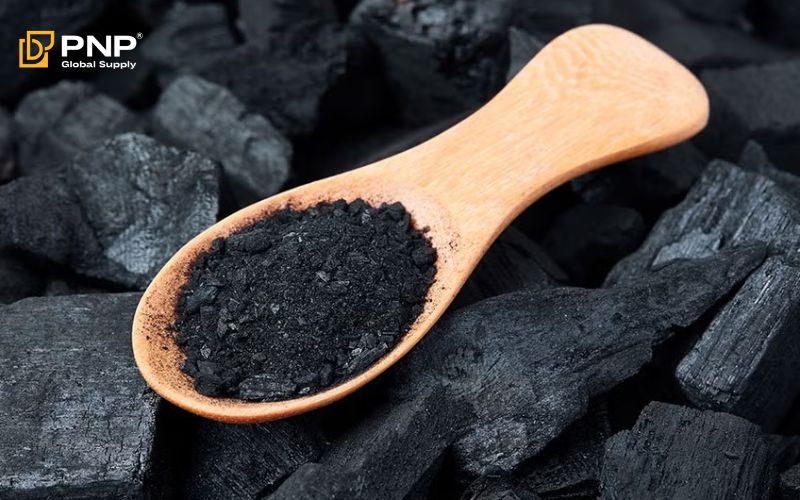
Main Uses of Charcoal
Charcoal’s versatility makes it indispensable across various applications:
- Cooking and Grilling: Lump charcoal or briquettes fuel barbecues, imparting a distinct smoky flavor.
- Heating: Used in fireplaces or stoves in areas lacking modern energy.
- Art: Charcoal sticks are a classic medium for sketching and drawing.
- Industrial Applications: Employed in metallurgy to reduce ores into metals.
Pros and Cons of Charcoal
Pros:
- High Heat Output: Burns at 700-1000°F, perfect for searing or grilling.
- Affordable: Widely available and cost-effective (approximately $0.50-$1 per pound).
- Natural Option: Lump charcoal is free of additives, ensuring a clean burn.
- Flavor Enhancement: Adds a distinct smokiness to grilled foods.
Cons:
- Limited Adsorption: Not effective for purification or toxin removal.
Messy: Produces ash and soot, requiring thorough cleanup. - Variable Burn: Irregular shapes can lead to uneven heat distribution.
- Health Risks: Inhaling smoke or using it indoors without proper ventilation can be hazardous.
What Is Activated Charcoal?
Definition and How It’s Made
Activated charcoal, also known as activated carbon, starts as regular charcoal but undergoes an additional “activation” process to enhance its porosity and adsorption capacity. This extra step makes it exceptionally effective at trapping impurities. Since its development in the early 1900s, activated charcoal has been widely used in medical, environmental, and cosmetic applications.
Production Process:
- Base Charcoal Creation: Organic materials (wood, coconut shells, or bamboo) are pyrolyzed into basic charcoal.
- Activation: The charcoal is then exposed to high heat (800-1200°C) in the presence of an activating agent (such as steam, oxygen, or chemicals like phosphoric acid) to develop millions of tiny pores.
- Final Product: The outcome is a fine, powdery or granular substance with an enormous surface area (500-1500 m² per gram).
Main Uses of Activated Charcoal
Activated charcoal’s superior adsorption makes it ideal for targeted applications:
- Medical Use: Treats poisoning or overdoses by binding toxins in the stomach.
- Water Purification: Filters impurities such as chlorine, pesticides, and heavy metals.
- Air Purification: Removes odors, volatile organic compounds (VOCs), and allergens.
- Beauty Products: Incorporated into toothpaste, face masks, and soaps for detoxifying skin or whitening teeth.
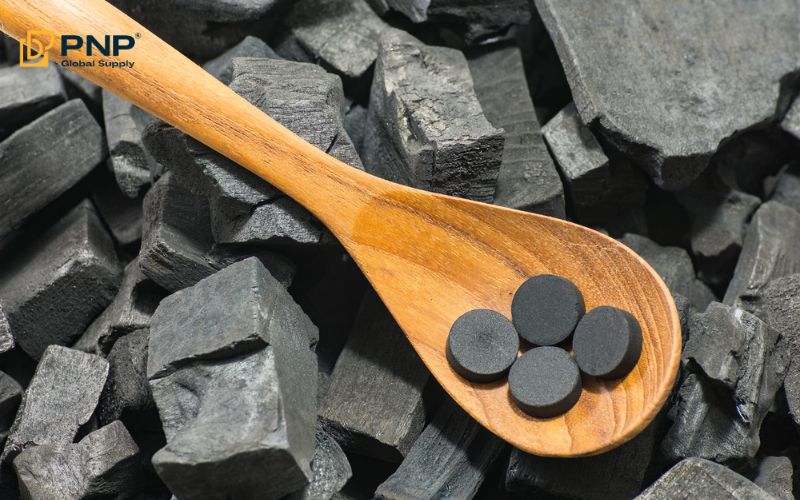
Pros and Cons of Activated Charcoal
Pros:
- High Adsorption Capacity: Effectively traps toxins, gases, and impurities.
- Versatile: Useful in health, beauty, and environmental applications.
- Safe for Specific Uses: Medically approved for detoxification when used correctly.
- Minimal Smoke: Produces minimal smoke compared to regular charcoal.
Cons:
- Not for Cooking: Its processing makes it unsuitable as a fuel source.
- Costlier: More expensive (about $5-$20 per pound) than regular charcoal.
- Health Limits: Overuse or misuse (e.g., frequent detox) can interfere with nutrient absorption.
- Fragile Form: Its powdery or granular nature can be messy or challenging to handle in large quantities.
Detailed Comparison Table: Activated Charcoal vs Regular Charcoal
| Comparison Factor | Regular Charcoal | Activated Charcoal | Key Takeaway |
| Production Process | Produced via a single-step pyrolysis of organic materials, resulting in a basic carbon structure intended for burning. | Undergoes a two-step process: initial pyrolysis followed by an activation stage that significantly increases porosity and adsorption capacity. | Activated charcoal requires extra processing for purification. |
| Adsorption Capacity | Limited adsorption due to a smaller surface area (approximately 20-100 m²/g), designed mainly for combustion rather than purification. | Exceptional adsorption capacity (500-1500 m²/g), ideal for trapping chemicals, toxins, and impurities effectively. | Activated charcoal vastly outperforms regular charcoal in adsorption. |
| Primary Uses | Used predominantly as a fuel for cooking and heating; also utilized in art and industrial applications. | Primarily used for purification: water, air, medical detox, and cosmetic applications. | Charcoal is utilitarian; activated charcoal is specialized. |
| Heat Output vs. Purification | Burns hot and long (700-1000°F) for grilling and searing; however, not designed for removing toxins. | Not used as a fuel due to its activation process; its strength lies in its ability to purify by binding toxins and impurities. | Each product serves a distinct purpose—fuel vs. purification. |
| Cost | Relatively inexpensive, widely available. | Costlier due to additional processing, reflecting its specialized use. | Regular charcoal is more cost-effective for cooking needs. |
| Safety and Health | Safe for external use (e.g., grilling) but hazardous if inhaled or used improperly indoors. | Safe for medical and cosmetic use when used as directed; however, overuse may interfere with nutrient absorption and medication efficacy. | Use each product in accordance with its intended purpose. |
Choosing the Right Type for Your Needs
If You Need Fuel for Cooking or Heating:
- Choose Regular Charcoal
Regular charcoal is ideal if your focus is on grilling, barbecuing, or heating. It is cost-effective, widely available, and provides high heat output-perfect for searing steaks, smoking ribs, or fueling your backyard BBQ. For those who value tradition and the tactile experience of managing a fire, regular charcoal remains unbeatable.
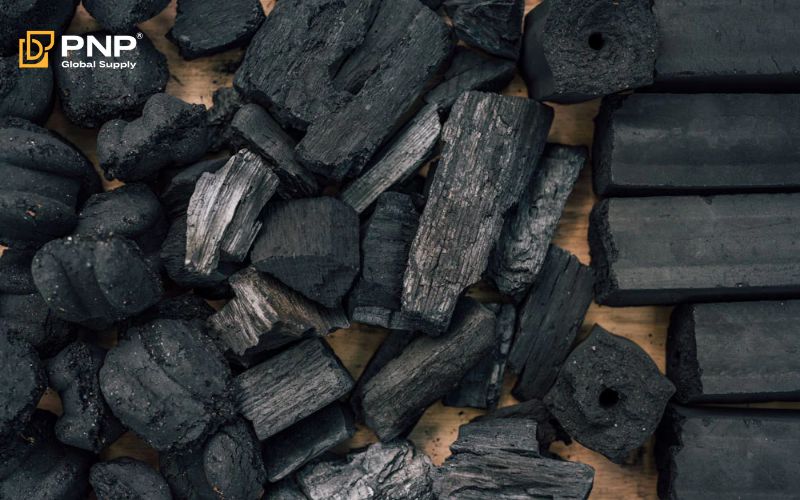
If You Need Purification, Detox, or Cosmetic Benefits:
- Choose Activated Charcoal
Activated charcoal is specifically engineered for purification. Whether you need to filter water, purify air, detoxify your system, or incorporate it into beauty products, activated charcoal offers superior adsorption properties that regular charcoal cannot match. It is a targeted solution for health, environmental, and cosmetic challenges.
Where to Buy High-Quality Charcoal and Activated Charcoal
Quality is always the top priority for every application. When buying charcoal or activated carbon, you should choose reputable addresses that provide high quality and reliable products.:
- For regular charcoal: Choose block or briquette charcoal without additives, made from hardwoods. This product not only provides optimal burning time but also produces minimal ash. We recommend using products from PNP charcoal manufacturer – a reputable address, famous for its superior quality in the charcoal field.
- For Activated Charcoal: Look for food-grade or medical-grade activated charcoal sourced from coconut shells or bamboo, ensuring reliability and safety.
By selecting high-quality products, you ensure both excellent performance and sustainable sourcing.
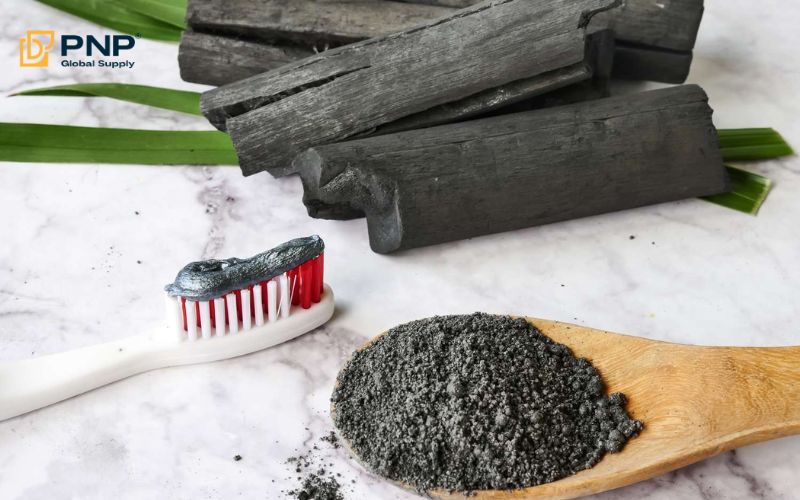
Frequently Asked Questions About Activated Charcoal vs Charcoal
1. Can I Use Activated Charcoal for Grilling?
No, activated charcoal is not designed for cooking. Its enhanced porous structure is optimized for purification, and it does not burn effectively as a fuel.
2. Is Activated Charcoal Safe for Ingestion?
Yes, food-grade activated charcoal is safe for medical use (such as poisoning treatment or detox) when used as directed. However, regular consumption may affect nutrient absorption-consult a healthcare professional for guidance.
3. Which Is More Effective for Water Purification?
Activated charcoal is far superior for water filtration due to its vast surface area and high adsorption capacity, making it ideal for removing impurities and toxins from water.
Conclusion
Both regular charcoal and activated charcoal serve unique purposes:
- Regular Charcoal is your go-to choice if you need a reliable, cost-effective fuel for cooking, grilling, or heating.
- Activated Charcoal is best suited for purification, detoxification, and cosmetic applications where high adsorption is critical.
By understanding the production processes, uses, and detailed differences between these two types of charcoal(انواع الفحم), you can make an informed decision tailored to your specific needs.
For premium, sustainable charcoal options-whether for your next BBQ or for advanced purification-visit PNP Charcoal. Our range of high-quality products ensures you get the performance and reliability you deserve.
If you have any further questions or require personalized advice, our team is here to guide you every step of the way. Enjoy making the best choice for your lifestyle and applications!

